Kitchen Blade Guide
Japanese knife shapes (the main ones)
-
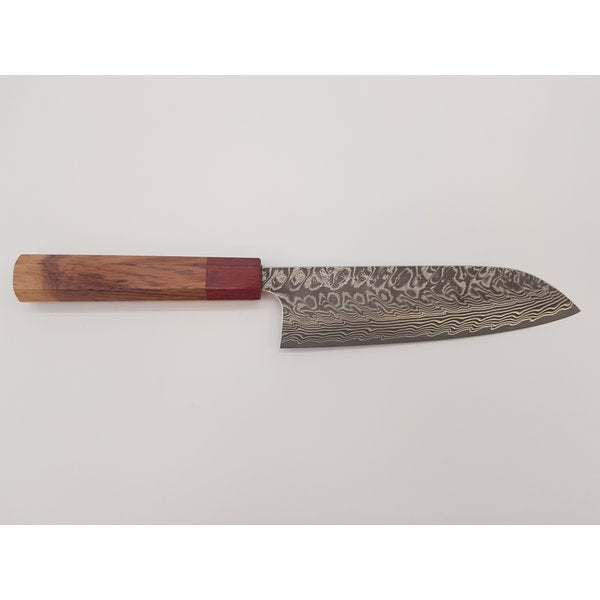
Santoku
The santoku knife is probably the best-selling Japanese knife in America. It is appreciated for its smaller size than the gyuto, which gives it greater precision, maneuverability and speed. The santoku knife is highly versatile, and will suit most cutting tasks. However, it's a good idea to also have access to a longer knife for cutting larger foods. In addition, cuts requiring great strength (e.g. cutting squash) should be performed with a less brittle steel knife, albeit softer and less sharp, such as a Western chef's knife, which is much more suitable for this kind of task.
-
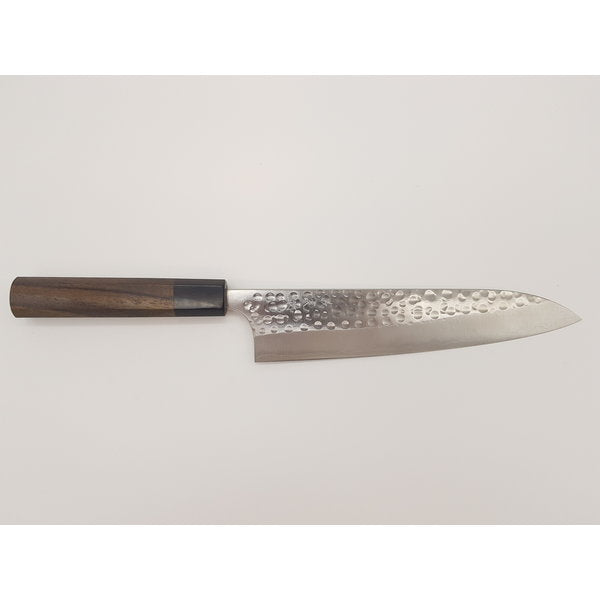
Gyuto
The gyuto generally measures around 8". It features a curve towards the tip of the blade that facilitates rocking cutting. The point is fine and points forward for precise drilling.
For many cooks, if there was one knife to take to a desert island, it would be the gyuto. While some specialized knives may be easier to use in certain situations, there are few tasks that a gyuto cannot perform, apart from cuts that require great strength (e.g. cutting squash) which, for their part, should be executed with a knife with less brittle, if softer and less sharp, steel, such as a Western chef's knife. -

Bunka
Like the Santoku knife, the Bunka knife is appreciated for its smaller size, which makes it easier to handle and faster than the gyuto. Its tip is more pronounced and often more aggressive than the santoku, and is particularly appreciated for its aesthetic appeal. The bunka knife is highly versatile, and will suit most cutting tasks. However, it's a good idea to also have access to a longer knife for cutting larger foods. In addition, cuts that require great strength (e.g. cutting squash) should be carried out with a knife with less brittle steel, albeit softer and less sharp, such as a Western chef's knife, which is much more suitable for this kind of task.
-
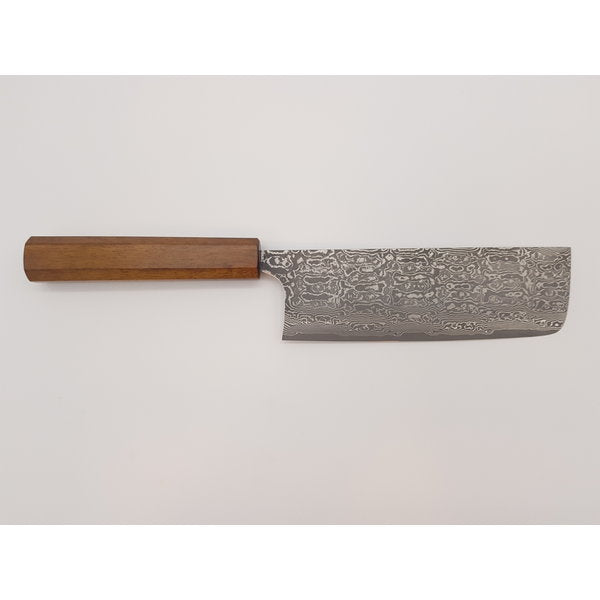
Nakiri
The nakiri is specially designed for working with vegetables. It features a flat profile and a relatively square tip. This profile makes this knife ideal for cutting without tilting, such as julienning or slicing an onion at lightning speed without spraining the wrist! The traditional nakiri knife has an almost perfectly flat profile, making it ideal for specialized use, while some industrial models have a slightly curved profile, making them a little more versatile. Although very effective for certain tasks, it is a complementary knife in the kitchen.
-
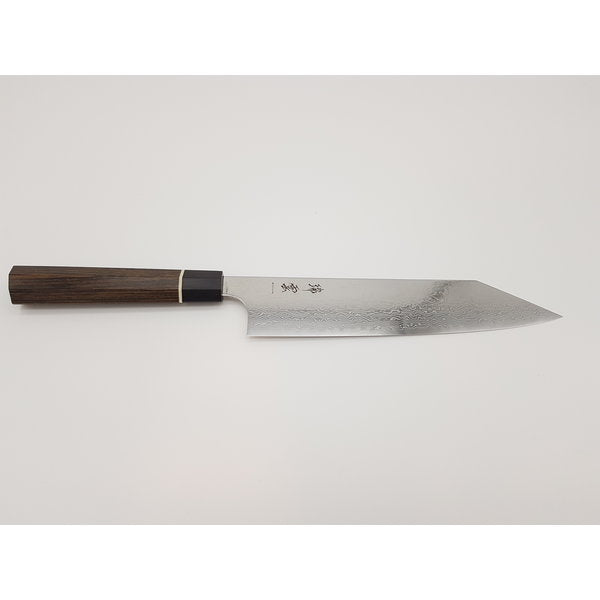
Kiritsuke
The kiritsuke generally measures around 8" and more. It has a curve towards the tip of the blade, although slightly less pronounced than the gyuto, for rocking cutting. The point is fine and points forward for precise piercing (pierces better than gyuto).
Like the gyuto, there are few tasks that a Kiritsuke cannot perform, apart from cuts that require great strength (e.g. cutting squash), which, for their part, should be performed with a knife with less brittle steel, albeit softer and less sharp, like a Western chef's knife.
-

Petty
The petty is a versatile knife that can be used in many kitchen situations. It is ideal for delicate tasks that require a smaller, more manageable knife than a medium or large one. For example, the petty can be used to cut vegetables into small pieces, to peel fruits and vegetables, or to cut small pieces of meat and fish. It can also be used to cut food while limiting friction. Its use is limited by the low height of the heel: the tip is mostly used when used on a chopping board.
Western knife shapes (the main ones)
-
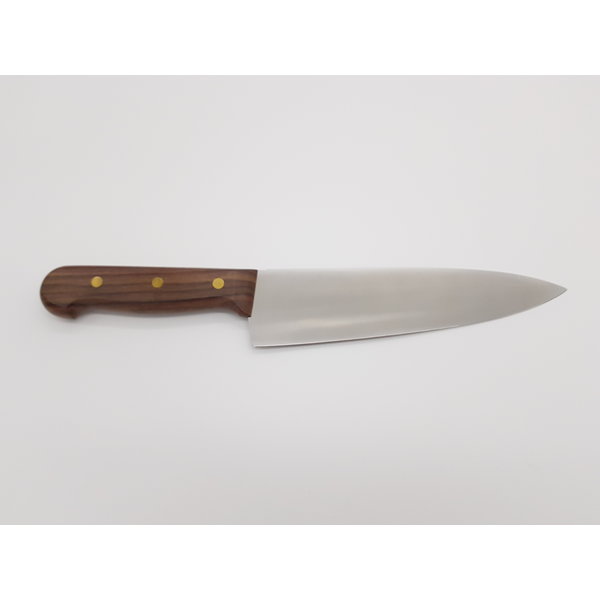
Chef
As we often tell our customers: if there's only one knife to have in a kitchen, it would be the Western chef's knife! This highly versatile knife is suitable for most cutting tasks. If there are two knives to have in a kitchen, the chef's knife would benefit from being accompanied by a Japanese knife like the santoku: much sharper and more precise. The latter, however, is fragile and won't be strong enough for tougher tasks, such as cutting squash. The chef's knife will be the best knife for this task.
-
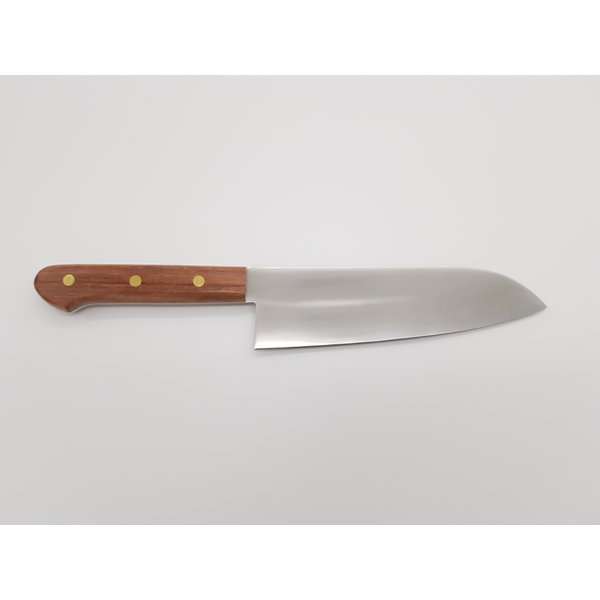
"Santoku style
The Western santoku-style knife complements the chef's knife if budget is limited. This knife, being generally thinner and allowing more precise cutting than the chef's knife, is particularly useful for quick and precise cutting of vegetables. Its shape is inspired by the Japanese santoku knife, but it lacks the latter's fundamental characteristics: a laminated blade containing a very hard core offering superior sharpness. Although it may be sharper than a chef's knife thanks to its thin blade, its cutting edge is not that of a true Japanese santoku.
-
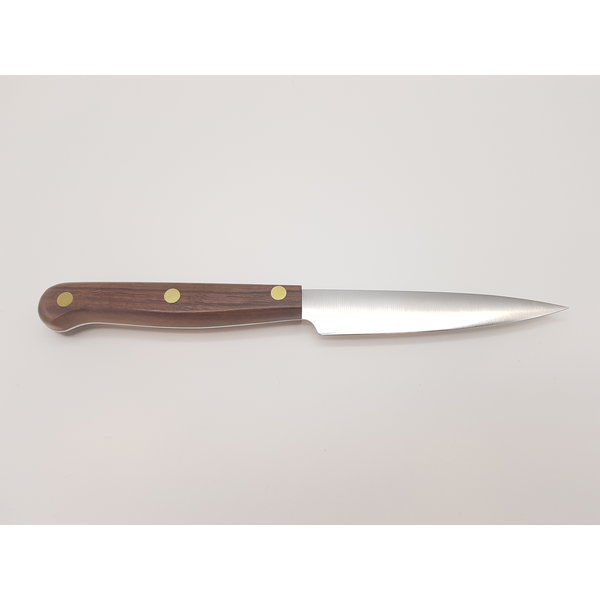
Office
The paring knife is ideal for precision work and delicate kitchen tasks. Its short, pointed blade makes it perfect for peeling or cutting with the tip on the chopping board. It's also handy for cutting food quickly at breakfast, as it can be washed and stored very quickly.
-
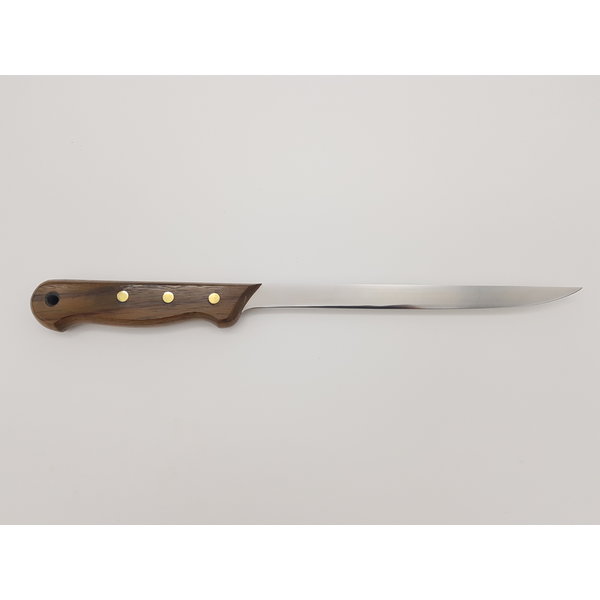
With net
The fillet knife (or fish knife) is a knife with a thin, flexible blade, designed to easily remove fish skin and bones, as well as to cut precise fillets effortlessly. It can also be used for any cut requiring limited friction between the knife and the food, as its blade is very narrow. This knife is generally sharpened to a particularly fine angle for a Western knife, as its blade normally comes into very little contact with the cutting board (normal direct contact would be too aggressive for this sharpening angle on a Western knife, given their softer steel than Japanese knives).
-
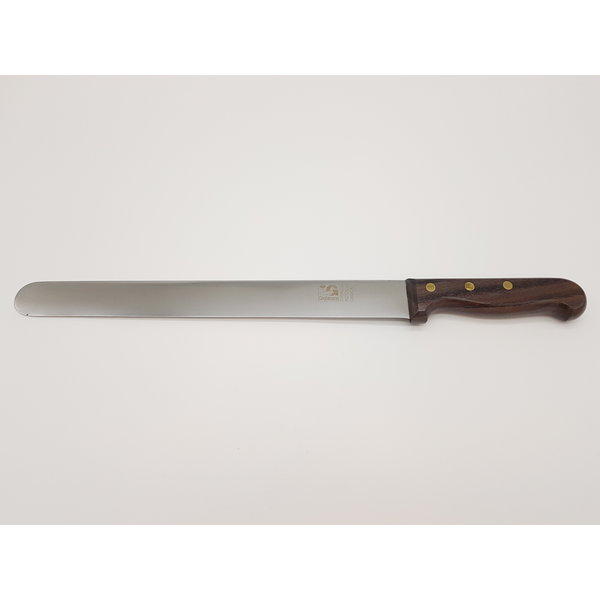
For slicing
The slicing knife is specialized for cutting large pieces of meat. Its long, thin blade makes it perfect for slicing meat with precision and uniformity. It can also be used to slice bread and cut fruit and vegetables into uniform slices. This knife is generally sharpened at a particularly fine angle for a Western knife, as its blade normally comes into little contact with the cutting board (direct, habitual contact would be too aggressive for this sharpening angle on a Western knife, given their softer steel than Japanese knives).
-
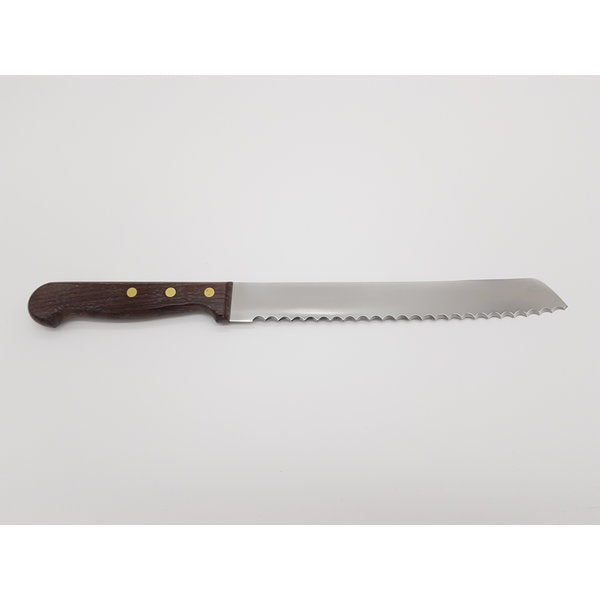
Bread knife
The bread knife is designed for cutting bread and other hard-crusted foods, without crushing or shredding them. Its serrated blade easily penetrates the crust without compromising the crumb. Generally speaking, a chef's knife can do the job just fine. However, some artisan breads baked in a steamy oven have a particularly tough, hard crust. A serrated knife of this kind is therefore of interest in these cases. It's important to note that serrated knives can be sharpened, but only by hand. The Aiguisoir sharpens them, one tooth at a time, with tools that perfectly match the shape of the teeth. We recommend sharpening every two or three years, depending on use. Just as bread knives are sharpened asymmetrically,
they are specifically designed for either right- or left-handed people. -

Boner
The boning knife is a specialized tool for boning meat and poultry with precision and ease. Its narrower, sharper blade makes it easy to separate bones from meat, while minimizing waste and producing clean, precise cuts. These knives are generally sharpened to a relatively high angle, making them robust. However, you'll be disappointed if you use it to cut a tomato!
-

Cutter
The cleaver (not to be confused with the Chinese cleaver) is a type of knife mainly used by butchers to cut, chop and divide meat. Unlike other kitchen knives, the cleaver has a thicker, heavier blade that can slice through bones and joints. It is often used to cut ribs, marrow bones, legs and poultry, as well as to divide meat carcasses.

























